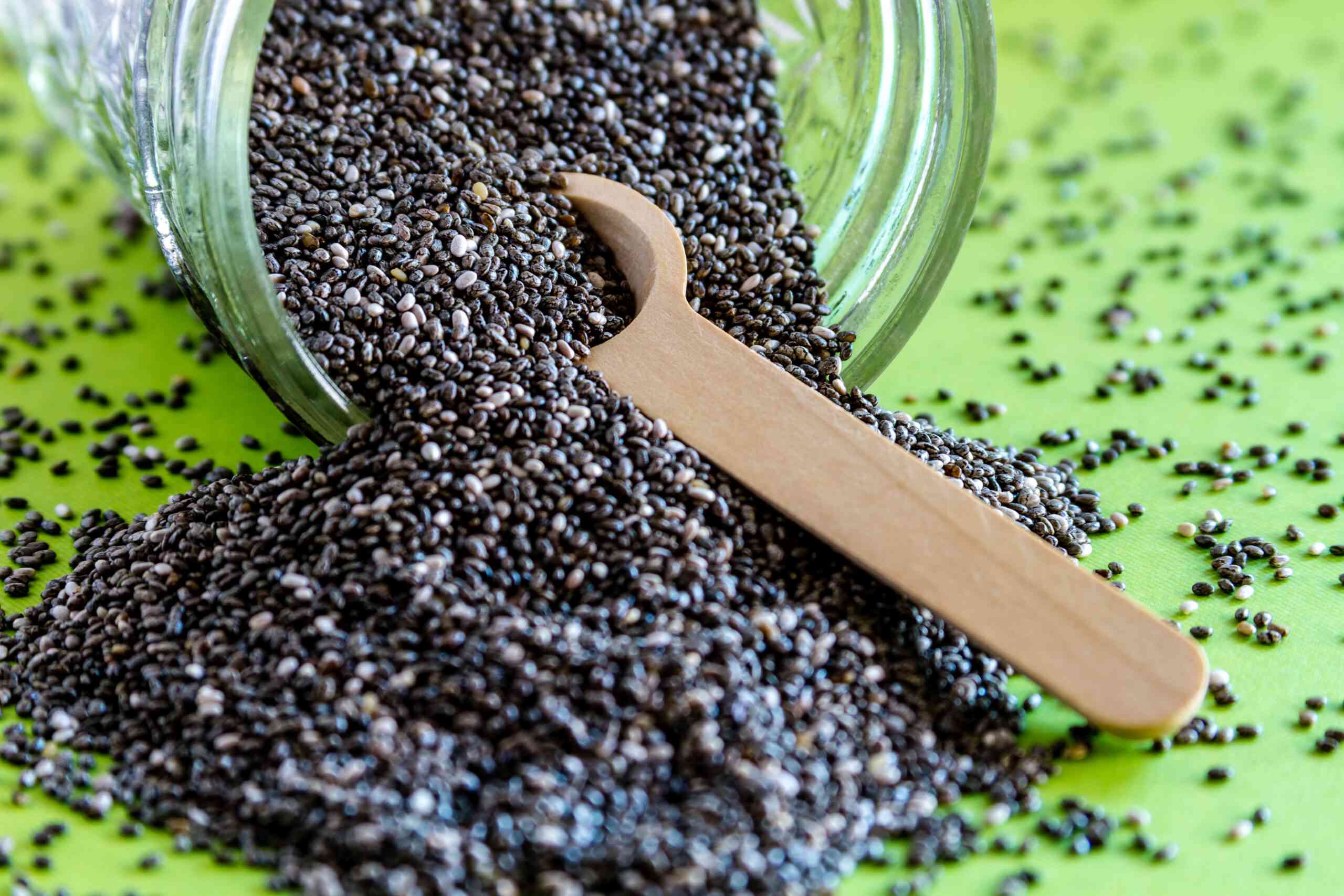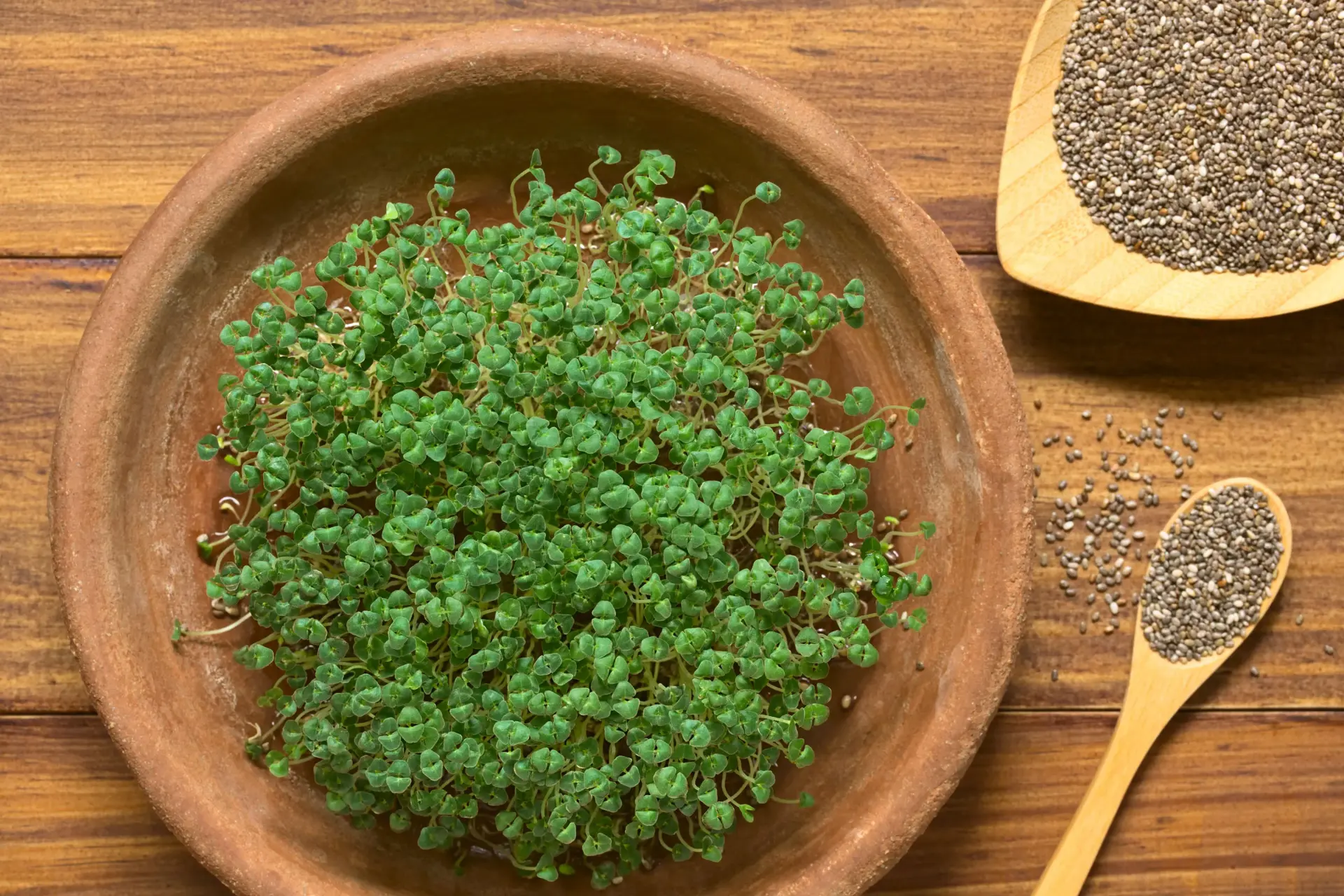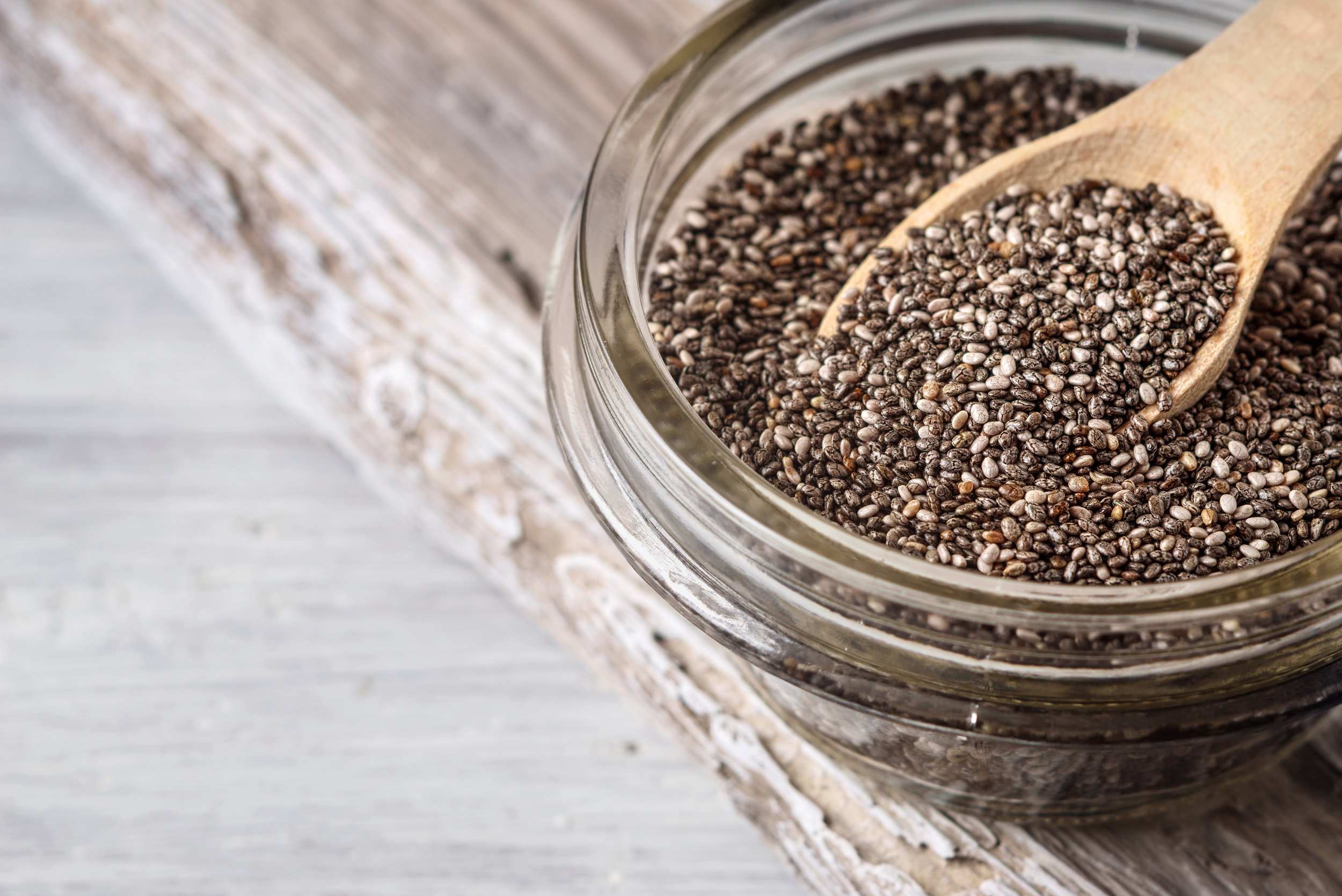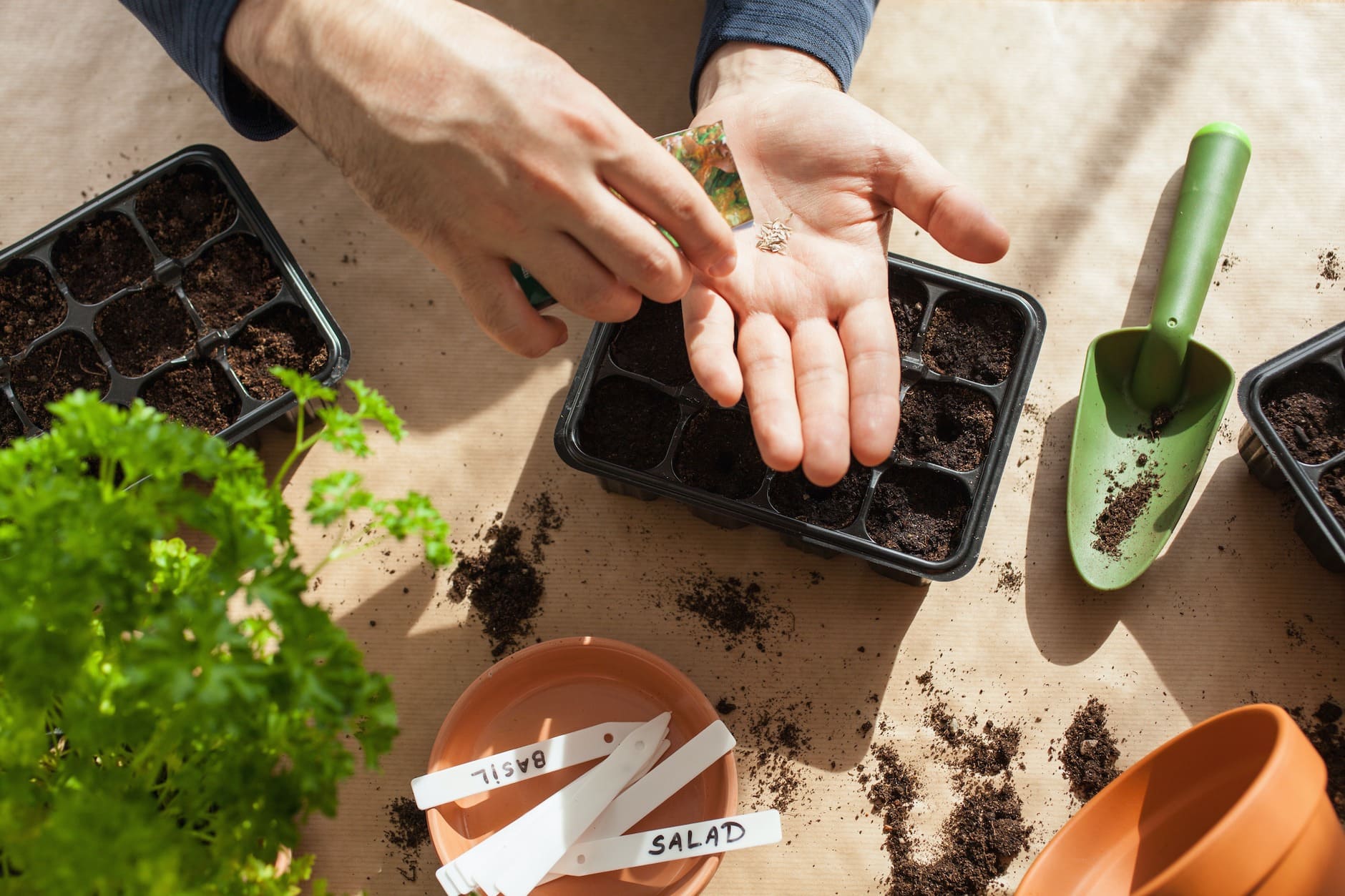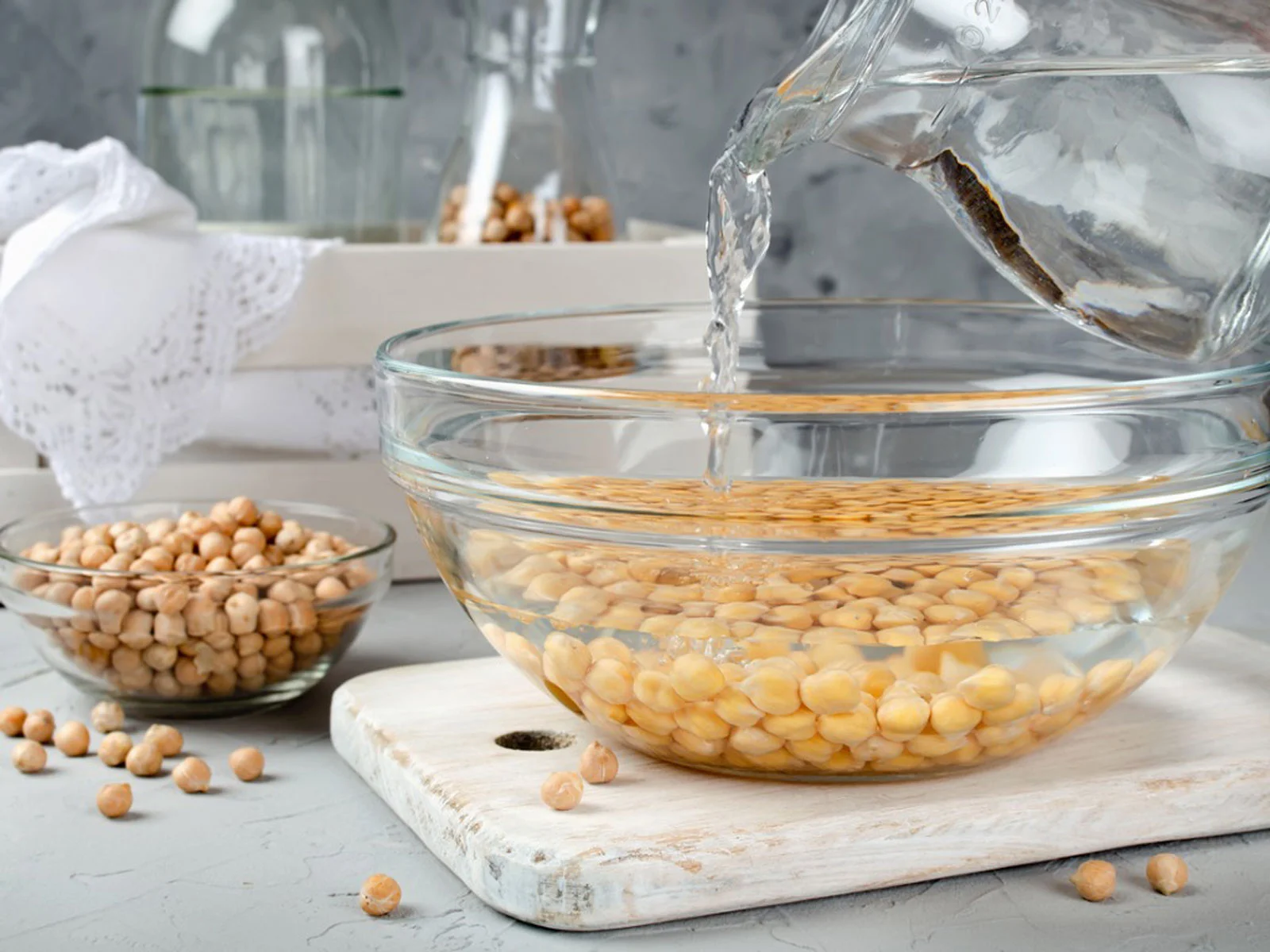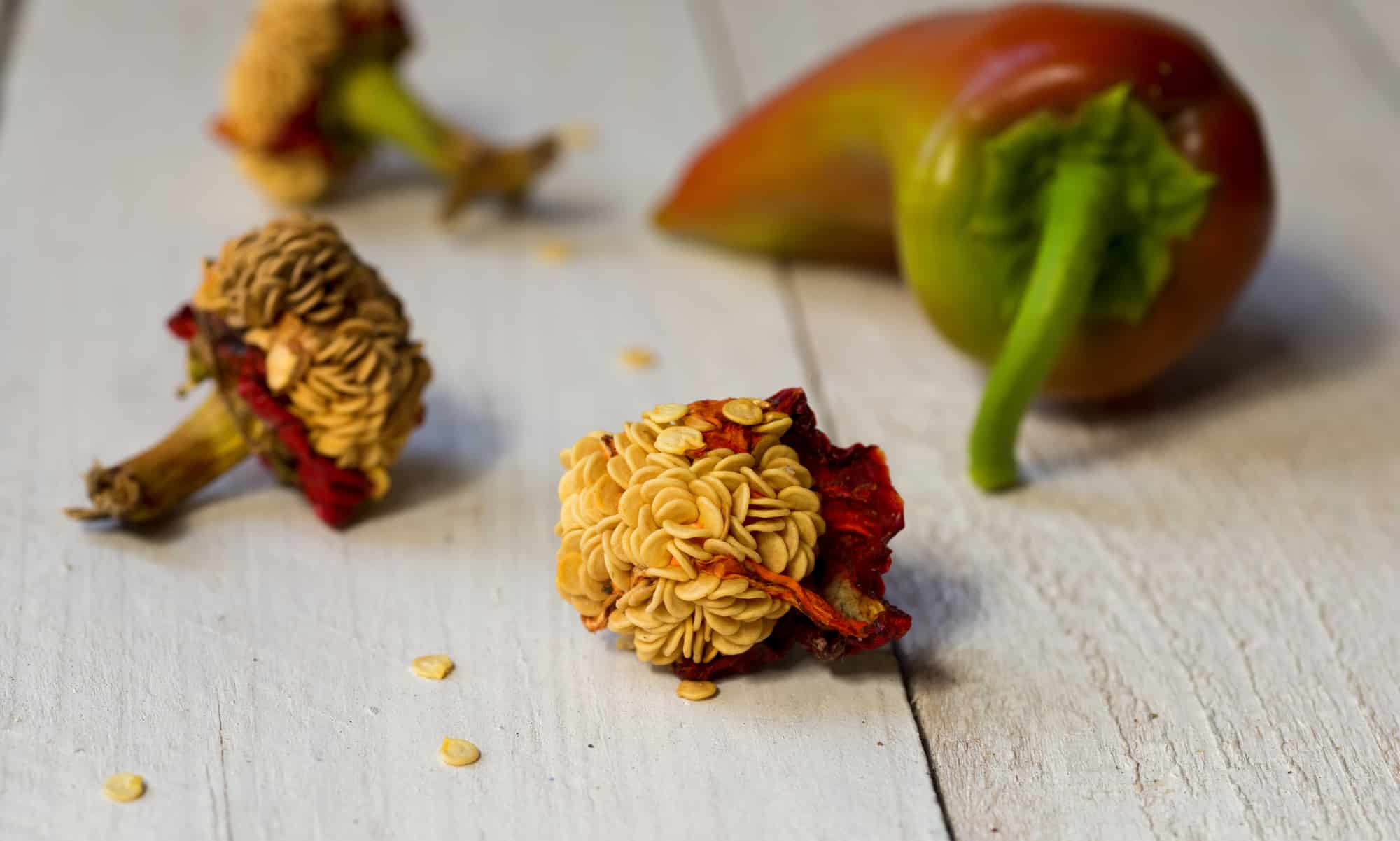Home>Gardening Tips and Tricks>Problem Solving>How Long Do You Soak Chia Seeds
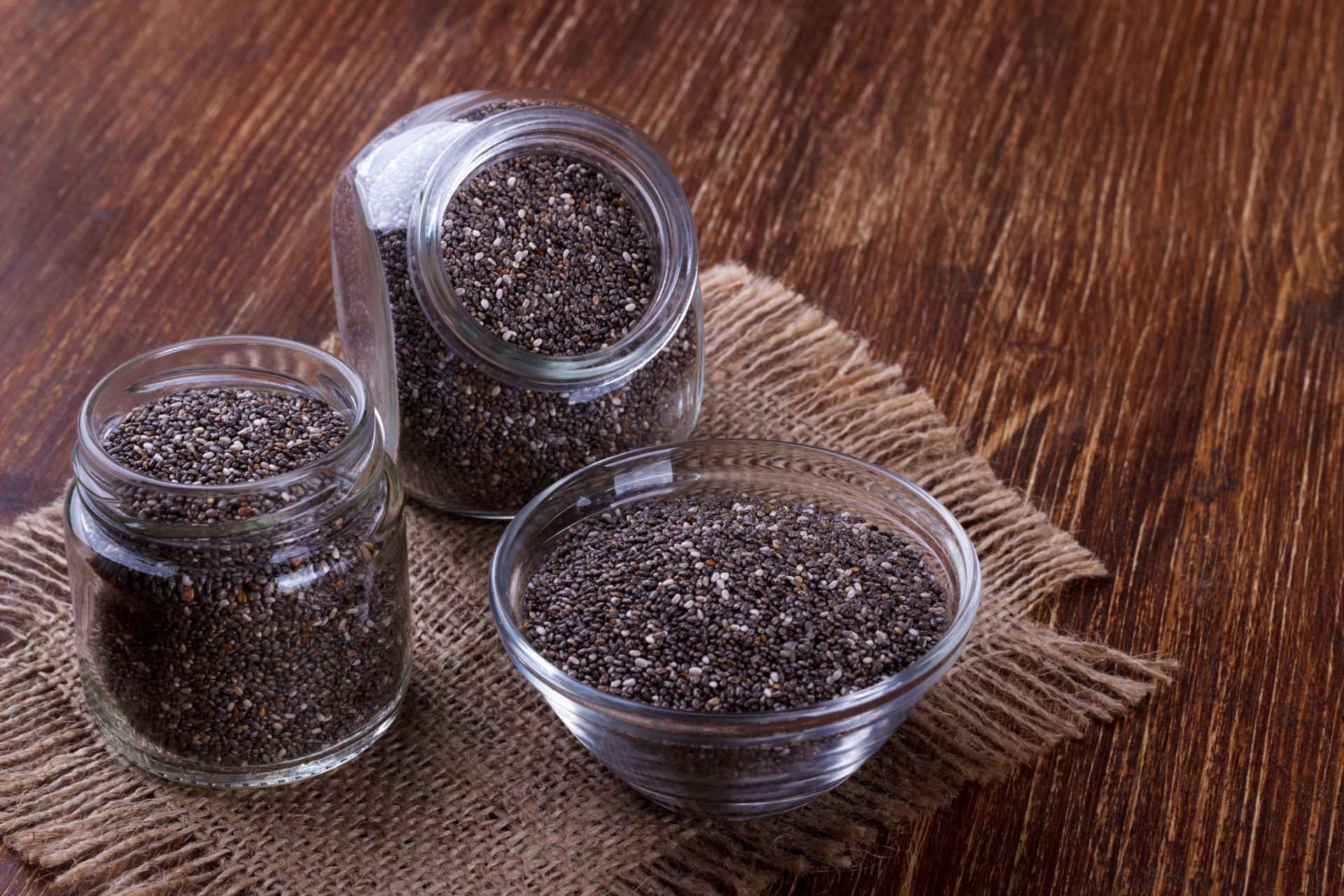

Problem Solving
How Long Do You Soak Chia Seeds
Modified: January 22, 2024
Discover the best ways to soak chia seeds for maximum health benefits and problem-solving potential. Find out how long to soak chia seeds for optimal results.
(Many of the links in this article redirect to a specific reviewed product. Your purchase of these products through affiliate links helps to generate commission for Chicagolandgardening.com, at no extra cost. Learn more)
Table of Contents
Introduction
Welcome to the world of chia seeds! These tiny seeds have gained immense popularity in recent years due to their numerous health benefits and versatility in culinary applications. Chia seeds are derived from the plant Salvia hispanica, which is native to Central and South America. They have been consumed for centuries and were a staple food for ancient civilizations like the Mayans and Aztecs.
What makes chia seeds so special? Well, for starters, they are packed with essential nutrients. These little powerhouses are a great source of fiber, protein, healthy fats, and various vitamins and minerals. They are also rich in antioxidants, which help protect our cells from damage caused by free radicals.
But it doesn’t stop there. Chia seeds are also renowned for their ability to absorb liquid and form a gel-like consistency. This unique characteristic makes them an excellent addition to recipes, as they can bind ingredients together and add thickness to various dishes.
Whether you’re a health-conscious individual looking to improve your well-being or a culinary enthusiast searching for new ingredients to experiment with, chia seeds are worth exploring. In this article, we will delve into one specific aspect of chia seed consumption: soaking. So, grab a seat and let’s dive deeper into the world of chia seeds and explore the art of soaking them.
Benefits of Chia Seeds
Before we dive into the specifics of soaking chia seeds, let’s take a moment to appreciate the numerous health benefits they offer. Chia seeds are a nutritional powerhouse, and incorporating them into your diet can have a positive impact on your overall well-being.
First and foremost, chia seeds are an excellent source of dietary fiber. Just one ounce (approximately 28 grams) of chia seeds contains a whopping 10 grams of fiber, which is impressive considering their small size. Fiber plays a crucial role in promoting a healthy digestive system, regulating blood sugar levels, and aiding in weight management by keeping you feeling full for longer periods.
In addition to fiber, chia seeds are also rich in healthy omega-3 fatty acids. These essential fats are known for their ability to reduce inflammation, support brain health, and promote heart health. Incorporating chia seeds into your diet can be an excellent way to increase your intake of omega-3s, especially for those who follow a plant-based or vegetarian lifestyle.
Chia seeds are also a fantastic source of plant-based protein. They contain all nine essential amino acids, making them a complete protein source. Protein is essential for building and repairing tissues, supporting immune function, and promoting healthy hair, skin, and nails.
Furthermore, chia seeds are packed with important vitamins and minerals. They are particularly high in calcium, phosphorus, magnesium, and manganese, which are crucial for maintaining strong bones and teeth, regulating blood pressure, and supporting overall cellular function.
Another noteworthy benefit of chia seeds is their high antioxidant content. Antioxidants help protect our cells from oxidative damage caused by free radicals and can contribute to reducing the risk of chronic diseases, such as heart disease and certain types of cancer.
Lastly, chia seeds are incredibly versatile in the kitchen. Their mild, nutty flavor allows them to be easily incorporated into a variety of recipes, from smoothies and puddings to baked goods and salads. They can be used as a thickening agent or egg substitute in vegan baking or simply sprinkled on top of yogurt or oatmeal for an extra nutritional boost.
So, whether you’re looking to improve your digestion, support heart health, or simply add more nutrients to your diet, chia seeds are a fantastic addition. Now that we’ve explored the many benefits, let’s move on to the next step: preparing chia seeds for consumption through soaking.
Preparing Chia Seeds for Consumption
Before you can fully enjoy the benefits of chia seeds, it’s essential to understand how to prepare them for consumption. Chia seeds can be consumed in their raw and unsoaked form, but soaking them can enhance their nutritional profile and make them easier to digest.
To get started, you’ll need the following ingredients and equipment:
- Chia seeds
- Filtered water
- A bowl or jar
- A spoon or whisk for stirring
The most common method for preparing chia seeds is by soaking them in water. This process allows the seeds to absorb liquid and expand, creating a gel-like texture. Start by placing the desired amount of chia seeds into a bowl or jar. A general ratio is around 1 tablespoon of chia seeds to 3 tablespoons of water, but you can adjust the amounts based on your preference.
Next, pour the filtered water over the chia seeds, making sure they’re fully submerged. Use a spoon or whisk to stir the mixture, ensuring that all the seeds are well-coated with water. This step is crucial to prevent clumping and ensure even hydration.
After stirring, let the mixture sit for about 5 minutes. Then, give it another good stir to break up any clumps that may have formed. At this point, you’ll start to notice the chia seeds absorbing the water and forming a thick gel-like consistency.
While the soaking process typically takes around 15-20 minutes, it’s best to let the chia seeds soak for at least 30 minutes or up to several hours for optimal results. During this time, you can cover the bowl or jar and refrigerate it if desired, especially if you plan to consume the soaked chia seeds later.
Once the chia seeds are fully soaked, you can use them in various recipes or enjoy them on their own. The soaked chia seeds have a soft, jelly-like texture and a slightly nutty flavor. They can be added to smoothies, oatmeal, yogurt, or used as a topping for salads or desserts.
It’s worth noting that chia seeds can absorb up to 10 times their weight in liquid, so be mindful of the amount of water or liquid you use when soaking. Adjust the ratio based on your desired consistency and preference.
Now that you have a basic understanding of how to prepare chia seeds through soaking, let’s explore the next section: determining the optimal soaking time for chia seeds.
Soaking Chia Seeds: A Popular Method
Soaking chia seeds is a popular method that allows them to fully absorb liquid and develop a gel-like texture. This process not only enhances the digestibility of chia seeds but also brings out their unique nutritional properties.
As mentioned earlier, when chia seeds come into contact with liquid, they begin to absorb it and form a gel-like substance. This gel formation is due to the soluble fiber present in chia seeds, which expands and creates a thickened consistency.
The gel-like texture of soaked chia seeds is what makes them versatile in various recipes. It can be used as a thickening agent in puddings, smoothies, and sauces, or even as an egg substitute in vegan baking. The gel also helps bind ingredients together, providing structure and moisture to baked goods.
Aside from their culinary applications, soaking chia seeds can also enhance their nutritional benefits. When chia seeds are soaked, their nutrients are more readily available and easier for the body to absorb. The gel-like coating also creates a barrier that slows down the digestion process, resulting in sustained energy release and a prolonged feeling of fullness.
Another advantage of soaking chia seeds is that it can help prevent any potential digestive issues that some people may experience when consuming them in their dry form. The soaking process breaks down the hard outer shell of the seeds, making them easier to digest and preventing any discomfort or bloating.
While soaking chia seeds is a popular method, it’s essential to note that it’s not the only way to consume them. Chia seeds can also be added directly to recipes without soaking, such as sprinkling them on top of yogurt, oatmeal, or salads. They provide a crunchy texture and still offer their nutritional benefits, albeit without the gel-like consistency.
Ultimately, whether you choose to soak your chia seeds or consume them dry depends on personal preference and the texture you desire in your dishes. Experimenting with different methods can help you discover how you enjoy incorporating chia seeds into your diet the most.
Now that we have explored the benefits of soaking chia seeds and the popular method, let’s move on to the next section: determining the optimal soaking time for chia seeds.
How Long Should You Soak Chia Seeds?
The optimal soaking time for chia seeds can vary depending on personal preference and the desired texture. While chia seeds can start to absorb liquid and form a gel-like coating within minutes, it’s generally recommended to soak them for at least 30 minutes to allow for full hydration and optimal nutritional benefits.
Soaking chia seeds for 30 minutes to an hour is usually sufficient for most recipes. During this time, the chia seeds will absorb the liquid, expand, and develop a soft, gel-like texture. This texture is perfect for adding to smoothies, puddings, or as an egg substitute in baking.
For those who prefer a thicker consistency or want to use chia seeds as a thickener in recipes, soaking them for a longer period can be beneficial. You can soak chia seeds for several hours or even overnight in the refrigerator. This extended soaking time will result in a thicker gel-like texture and a more pronounced binding effect, making it ideal for recipes that require a denser consistency.
It’s important to note that if you plan to soak the chia seeds for an extended period, you may need to add a bit more liquid as they will continue to absorb moisture over time. It’s a good idea to check the consistency during the soaking process and adjust the liquid accordingly to achieve the desired outcome.
However, if you find yourself short on time, a quick soak of 10-15 minutes can still provide some gel-like texture and make the chia seeds easier to digest. While the full nutritional benefits may not be realized during a shorter soaking time, you can still enjoy the unique texture and added moisture that soaking provides.
Ultimately, the length of time you choose to soak chia seeds depends on your needs and preferences. Whether you opt for a quick soak or an extended soak, both methods can enhance the digestibility and texture of chia seeds, allowing you to incorporate them seamlessly into your favorite recipes.
Now that we’ve explored the optimal soaking time, let’s move on to discuss the factors that can affect the soaking time of chia seeds.
Factors Affecting Soaking Time
While the recommended soaking time for chia seeds is around 30 minutes to an hour, it’s important to note that several factors can affect how long it takes for the seeds to fully absorb liquid and develop a gel-like texture. Understanding these factors can help you determine the ideal soaking time for your specific needs.
1. Temperature: The temperature of the liquid used for soaking can impact the soaking time. Warmer liquids tend to expedite the absorption process, while colder liquids may take longer to fully hydrate the chia seeds. If you’re looking for a quicker soak, using slightly warm water can help speed up the process.
2. Liquid-to-Chia Seeds Ratio: The amount of liquid you use in relation to the amount of chia seeds can affect soaking time. The general rule of thumb is to use approximately 3 tablespoons of liquid per 1 tablespoon of chia seeds. Adjusting this ratio can result in a thinner or thicker gel-like consistency and impact the time it takes for the seeds to fully absorb the liquid.
3. Chia Seed Quality: The quality and freshness of the chia seeds can also impact the soaking time. Fresh, high-quality chia seeds tend to absorb liquid more efficiently compared to older or lower-quality seeds. If you find that your chia seeds are taking longer to absorb liquid or not forming a gel-like texture, it may be worth considering the quality of the seeds you are using.
4. Seed-to-Liquid Contact: Ensuring proper seed-to-liquid contact is essential for even hydration. Stirring or whisking the chia seed mixture at the beginning of the soaking process helps prevent clumping and ensures that all the seeds are evenly coated with liquid. This helps to speed up the absorption process and achieve a consistent texture.
5. Desired Texture: The desired thickness or texture of the end product will also influence the soaking time. If a thinner consistency is desired, a shorter soaking time may be sufficient. On the other hand, if a thicker gel-like texture is desired, a longer soaking time may be necessary. It’s important to check the consistency during the soaking process and adjust as needed.
By considering these factors, you can adapt the soaking time to achieve the desired results. Experimenting with different combinations of temperature, liquid-to-chia seed ratio, and soaking duration will allow you to find the perfect balance for your preferences and culinary needs.
Now that we’ve explored the factors that can affect the soaking time of chia seeds, let’s move on to the next section: recognizing the signs that chia seeds are fully soaked and ready to use.
Signs to Look for When Chia Seeds Are Fully Soaked
Knowing when chia seeds are fully soaked and ready to use is crucial for achieving the desired texture and maximizing their nutritional benefits. Here are some signs to look out for when determining if chia seeds are fully soaked:
1. Gel-Like Texture: When chia seeds are fully soaked, they develop a gel-like consistency. You should notice a soft and slightly jelly-like texture to the seeds. The gel formation is a result of the soluble fiber in chia seeds absorbing the liquid and expanding.
2. Absorption of Liquid: Chia seeds are incredibly absorbent and can absorb up to 10 times their weight in liquid. When chia seeds are fully soaked, they would have absorbed most, if not all, of the liquid you used for soaking. This can be observed by visually checking if the liquid has been absorbed and the seeds have become plump and expanded.
3. Even Distribution: Another sign that chia seeds are fully soaked is when they are evenly dispersed throughout the mixture. When stirring or shaking the container, the chia seeds should move freely and distribute themselves evenly, showing that they have absorbed the liquid and formed a consistent gel-like texture.
4. Softness and No Crunchiness: Prior to soaking, chia seeds have a crunchy texture. When fully soaked, they become soft and lose their initial crunchiness. By gently pressing a soaked chia seed between your fingers, you can feel the softness and texture change.
5. Increased Size: As chia seeds absorb liquid, they expand in size. When fully soaked, the seeds will appear larger and plumper compared to their dry state. This increase in size is a visible indicator that the chia seeds have absorbed the liquid and are ready to use.
It’s important to note that the soaking time can differ depending on the desired texture and recipe. If you prefer a thinner consistency, you can check for these signs earlier in the soaking process. Conversely, if you prefer a thicker gel-like texture, you can extend the soaking time to achieve the desired result.
By paying attention to these signs, you can ensure that your chia seeds are fully soaked and ready to be incorporated into your favorite recipes, such as smoothies, puddings, or baked goods. Remember to adjust the soaking time and method based on your personal preferences and the specific requirements of the dish you’re preparing.
Now that we’ve discussed the signs of fully soaked chia seeds, let’s explore alternative methods for soaking chia seeds.
Alternative Methods to Soak Chia Seeds
While the traditional method of soaking chia seeds in water is the most common, there are alternative methods that you can explore to infuse different flavors and add variety to your chia seed preparations. These alternative methods can offer unique textures and tastes to elevate your chia seed experience.
1. Milk or Non-Dairy Alternatives: Instead of using water, you can opt to soak your chia seeds in milk or non-dairy alternatives like almond milk, coconut milk, or oat milk. This method adds a creamy texture and imparts a subtle flavor to the soaked chia seeds. It’s particularly enjoyable when creating chia seed pudding or overnight oats.
2. Fruit Juice or Tea: Another way to infuse flavor into your soaked chia seeds is to use fruit juice or tea as the soaking liquid. This method adds a fruity or herbal taste to the chia seeds, enhancing their overall flavor profile. Experiment with different juices or teas to customize the taste to your liking.
3. Nut Butter or Yogurt: Instead of soaking the chia seeds solely in liquid, you can mix them with nut butter or yogurt. This combination creates a creamy and indulgent consistency, making it ideal for creating chia seed parfaits or adding richness to your breakfast bowls.
4. Citrus Zest or Spices: To add an extra burst of flavor to your soaked chia seeds, you can incorporate citrus zest or spices. Simply add grated lemon or orange zest, ground cinnamon, nutmeg, or any other spice of your choice to the soaking mixture. This method infuses the chia seeds with aromatic notes, making them more aromatic and enjoyable.
5. Fermented Liquid: For individuals seeking a probiotic boost, fermenting the liquid used to soak chia seeds is an option. This involves using fermented beverages like kombucha or kefir as the soaking liquid. The fermentation process adds beneficial bacteria to the chia seeds, promoting gut health and introducing a tangy flavor profile.
When utilizing these alternative soaking methods, the process remains similar to the traditional soaking technique. Adjust the soaking time based on the chosen liquid and desired consistency. As the chia seeds absorb the alternative liquids, they will still form a gel-like coating, allowing you to enjoy the added flavors and textures.
These alternative soaking methods provide a creative twist to incorporating chia seeds into your meals and allow you to tailor the flavors to your preferences. Explore different combinations and experiment with these methods to find exciting new ways to enjoy the nutritional benefits of chia seeds.
Now that we’ve explored alternative methods for soaking chia seeds, let’s conclude our discussion on the versatility and benefits of chia seeds.
Conclusion
Chia seeds are truly a remarkable addition to any diet. Their abundance of nutrients, versatility in culinary applications, and unique ability to absorb liquid and form a gel-like texture make them a valuable ingredient for both health-conscious individuals and culinary enthusiasts.
In this article, we explored the benefits of chia seeds, including their high fiber and omega-3 fatty acid content, as well as their protein, vitamin, and mineral content. These nutritional powerhouses offer numerous health benefits, supporting digestion, heart health, brain function, and more.
We also discussed the proper method of preparing chia seeds for consumption, whether through soaking or incorporating them into recipes in their dry form. Soaking chia seeds allows them to fully absorb liquid, enhancing their nutritional profile and making them easier to digest. The gel-like texture created by soaking is ideal for incorporating chia seeds into smoothies, puddings, baked goods, and other dishes.
Understanding the optimal soaking time for chia seeds is important, with a general guideline of at least 30 minutes to ensure proper hydration. However, factors such as temperature, liquid-to-chia seed ratio, seed quality, seed-to-liquid contact, and desired texture can influence the soaking time. The signs of fully soaked chia seeds, such as a gel-like texture, absorbed liquid, even distribution, softness, and increased size, can guide you in determining when they are ready to use.
Additionally, we explored alternative methods to soak chia seeds, such as using milk or non-dairy alternatives, fruit juice or tea, nut butter or yogurt, or incorporating citrus zest or spices. These methods offer different flavors and textures to elevate your chia seed creations and add variety to your meals.
Whether you choose to soak chia seeds or incorporate them into your recipes in their dry form, incorporating these tiny seeds into your diet can bring a world of benefits. From their nutritional profile to their culinary versatility, chia seeds are a wonderful addition to support your overall well-being.
So go ahead, get creative in the kitchen, and enjoy the benefits and flavors that chia seeds have to offer!


